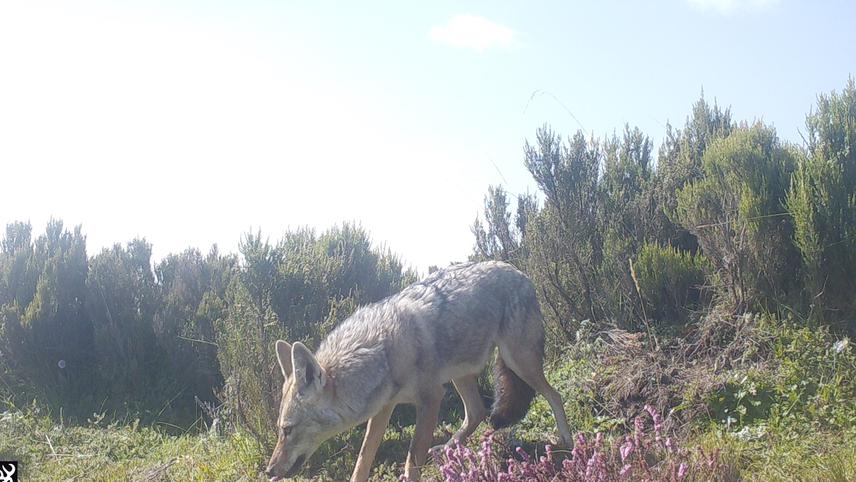Tariku Mekonnen Gutema
Other projects
4 Nov 2014
Foraging Ecology and Resource Competition between Sympatric African Wolf (Canis lupus lupaster) and Ethiopian Wolf (Canis simensis) in the Ethiopian Highlands
30 Mar 2016
Behavioral Ecology of the African Wolf and its Potential Effect on the Survival of the Endangered Ethiopian Wolf in the Ethiopian Highlands
23 Jan 2020
Promoting the Co-Existence Approach of Carnivore Conservation in Human Dominated Landscape of Ethiopian Highlands, Guassa
In this study, we aim to determine the density of the African wolves in the Afroalpine ecosystem of Ethiopia using call-up methods. The data from this project will provide valuable information to guide the conservation efforts of the endangered Ethiopian wolf and human-African wolf conflict management. It is also important as information source for IUCN red list for the African wolf, which is listed as data deficient.

African wolf.
Two species of canids, African wolf (Canis lupaster) and Ethiopian wolf (Canis simensis) co-exist in the Ethiopian highlands. The recently discovered African wolf is distributed in northern and eastern Africa while the endangered Ethiopian wolf is endemic to the Ethiopian highlands. With fewer than 500 adult individuals left in the wild, the Ethiopian wolf is the world's rarest canid. Rabies and canine distemper had been reported as the most important threat for the survival of Ethiopian wolves; however, we have recently documented another potential threat of Ethiopian wolf as a result of interference competition with the sympatric African wolf.
The outcome of the interactions was affected by numerical superiority and territorial dominance which played a more important role than body size differences. High density of the African wolf implies further research and conservation management plan for the endangered Ethiopian wolf. In this study, we aim to determine the density of the African wolves across the range of Ethiopian wolves using call-up methods.
The study will be carried out in Bale Mountains, Guassa Community conservationArea, Borena Saynt National Park, Arsi Mountains and Simien Mountains. Call-up method is an effective and inexpensive technique for counting Africa wolves. I will play continuous gnu-hyaena distress calls and African wolf sounds for 40 minutes, 20 min broadcast followed by a ten minutes pause in two cycles of on an MP3 player connected to a megaphone. The density of the African wolf will be estimated using the model of Mills et al (2001).
The data from this study is crucial for the following points:
1) We have documented the African wolf as a potential threat for Ethiopian wolf and might contribute for the recent extermination of them in some of the Ethiopian highlands such as Guna Mountains. Therefore, the data will provide valuable information to guide the conservation efforts of the endangered Ethiopian wolf.
2) The African wolf is data deficient in IUCN red list and this project will provide important data for the population status of the African wolf in the Ethiopian highlands.
3) The study also sources of information for developing mitigation measures of the serious Human-African wolf conflict in the Ethiopian highlands.